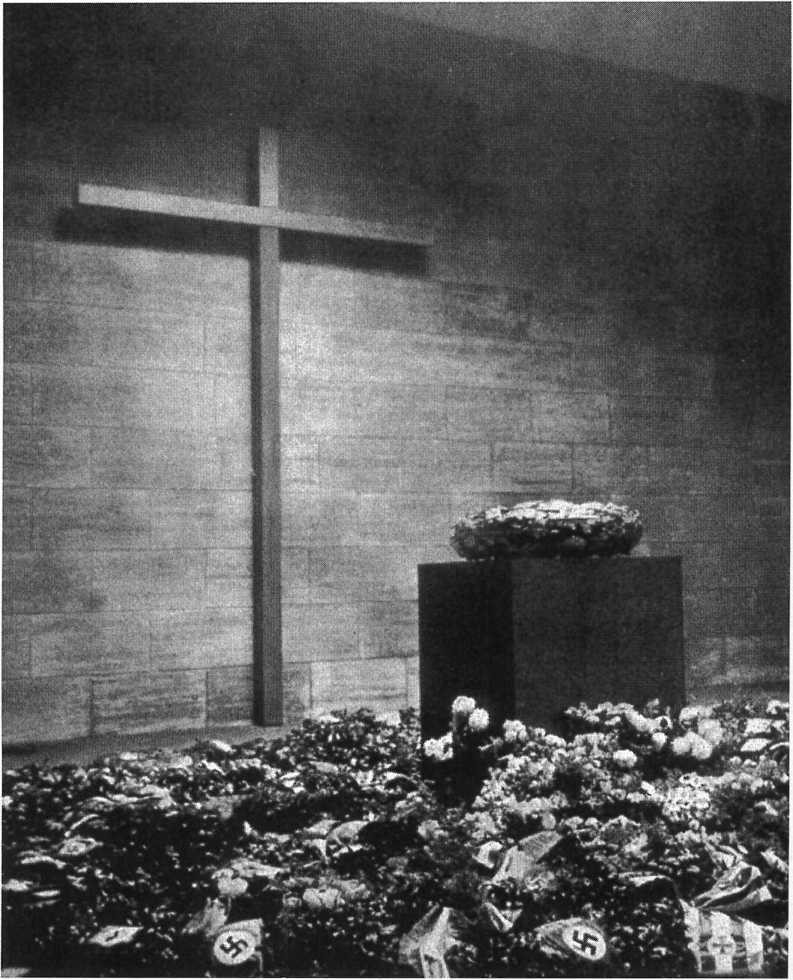Source

Source: Die Jugend des Führers Adolf Hitler. Bildbuch über die grossdeutsche Jugend, ed. Reichsjugendführung der NSDAP (Leipzig, 1942).
Constructed in the early nineteenth century, the Neue Wache, a neo-classical guardhouse on Unter den Linden in central Berlin, has enjoyed a long and complicated history in Germany’s commemorative landscape. Inaugurated in 1818 during an official state visit to the Kingdom of Prussia by Russian Tsar Alexander I, the building originally served as a royal guard enclosure and a memorial to the dead of the Napoleonic Wars. In the early 1930s, republican officials transformed the Neue Wache into a memorial for the fallen soldiers of World War I. The winning design for the reconceptualization was austere and lacked ornamentation.
After 1933, as this photograph shows, the Nazis added a large cross to the memorial and filled the surrounding area with flowers and Nazi trimmings. The memorial became a backdrop for speeches by regime officials and for various Nazi rallies. The Nazis’ changes to the Neue Wache reflected their efforts to inject Nazism into parts of life—here, death, but also birth and marriage—that traditionally fell under the purview of Christianity.
The Neue Wache underwent two additional transformations after 1945. The leaders of the German Democratic Republic redesigned it to honor the “Victims of Fascism and Militarism,” who were commemorated with an eternal flame. After the fall of the Berlin Wall in 1989, the eternal flame was replaced by a Käthe Kollwitz pietà (a sculpture of a grieving mother cradling her dying child). It is now known as the “Central Memorial of the Federal Republic of Germany to the Victims of War and Dictatorship.”

Source: Die Jugend des Führers Adolf Hitler. Bildbuch über die grossdeutsche Jugend, ed. Reichsjugendführung der NSDAP (Leipzig, 1942).